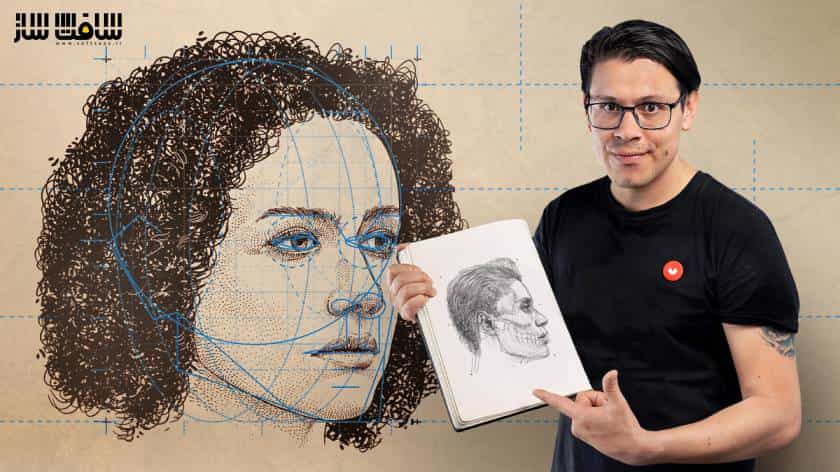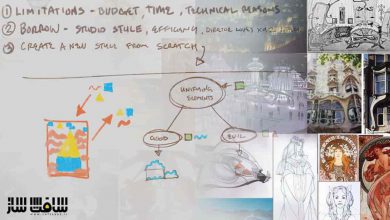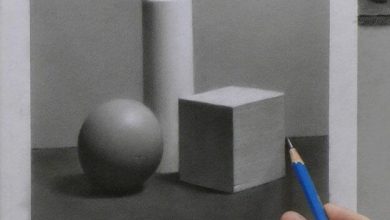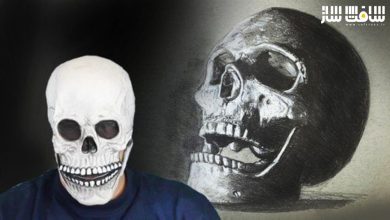آموزش طراحی فیگور برای مبتدیان
Domestika - Figure Drawing for Beginners

آموزش طراحی فیگور برای مبتدیان
در این آموزش طراحی فیگور برای مبتدیان از سایت اسپانیایی Domestika، با اصول طراحی و ترسیم بدن انسان به نسبت ایده آل بدون استفاده از مدلی آشنا خواهید شد. میل به کپچر کردن اندام انسانی و مکانیک پیچیده، اشکال و ساختار آن، هنرمندان را در سراسر تاریخ به چالش کشانده است.
تصویرگر و طراح ZURSOIF Miguel Bustos Gómez ، با بیش از 15 سال تجربه، نحوه طراحی فیگور انسان با تناسب عالی ، با استفاده از خطوط و دایره را آموزش می دهد. با استفاده از تکنیک ها و تمرین های صحیح، قادر به ایجاد نقاشی ها با ظاهری بسیار واقعی و ژست های متنوع خواهید شد. این دوره آموزشی توسط تیم ســافــت ســاز برای شما عزیزان تهیه شده است.
عناوین اصلی دوره آموزشی :
- تجهیزات مورد نیاز برای دستیابی به نتایج مطلوب
- تمریناتی برای گرم کردن دستان خود
- ترسیم خطوط مستقیم با طول های مختلف و دایره ها
- نحوه استفاده از ابزارهای اساسی
- روش های استراحت دادن به دست،آرنج و بازو
- روش اندازه گیری کلی بدن انسان
- استفاده از دایره ها ، تقسیم آن به دو نیمه و سه قسمت برای نشان دادن قسمت فوقانی اسکلت انسان،سر ،پشت و لگن
- کشیدن ستون فقرات و تقسیم مهر ها برای درک داینامیک حرکت بدن
- استفاده از روش های اندازه گیری و نسبت های کلی در درس های قبلی برای اندام مختلف
- آموزش مکان یابی اندام های فوقانی و تحتانی
- بررسی حرکت با ترسیم فیگور ها
- نشان دادن حجم از طریق اشکال هندسی
- نکاتی برای پست پروداکشن با استفاده از تکنیک های پرسپکتیو و پروجکشن
عنوان دوره : Domestika – Figure Drawing for Beginners
سطح : مبتدی
زمان کل دوره : 1.47 ساعت
تعداد فایل های تصویری : 20
سال آموزش : 2020
فایل تمرینی : ندارد
مربی دوره : ZURSOIF Miguel Bustos Gómez
نرم افزار : –
زیرنویس انگلیسی : ندارد
Domestika – Figure Drawing for Beginners
Learn the basics of drawing the human body with ideal proportions without using a model
The desire to capture the human figure and its complex mechanics, shapes and structures has challenged artists throughout history, and it hasn’t been any different for Zursoif. With a career spanning over 15 years, the illustrator and draftsman has made the representation of the human body the focus of his work, specializing in figurative art and anatomical drawing.
In this course you’ll learn how to draw the human figure proportionally, starting from the drawing of lines and circles. Using the right techniques and exercises, you’ll be able to give your drawings a very realistic appearance and build a catalog of poses that will serve as a guide for making elaborate and detailed images.
You’ll start by getting to know Zursoif, his career as an illustrator and his main influences. Then you’ll take a detailed look at what you’ll be creating in the course, and the equipment you’ll need to achieve the desired results.
In the second unit, you’ll perform exercises to warm up your hand, starting with the drawing of straight lines of different lengths, and circles. you’ll learn to use the basic tools and you’ll also see how the way in which you rest your hand, elbow, and arm can interfere with your result.
Afterward, you’ll learn the general measurements of the human body in practice. You’ll use the drawing of circles and its division into halves and thirds in order to represent the upper part of the human skeleton: head, back, and pelvis. To complete the unit you’ll see the spine and the division of the vertebrae, to try to understand the movement dynamics of the upper body.
Based on the measurements and general proportions you learned in the previous step, you’ll connect the different limbs, and Zursoif will explain aspects related to the movement of each part. You’ll start by learning to locate the upper extremities: arm, forearm, and hand, and then you’ll start to do the same with the lower extremities, divided into thigh, leg, and foot.
In the last unit you’ll explore movement by drawing more dynamic figures and, then, you’ll learn to represent volume in the human body through simple geometric shapes. To conclude, you’ll learn some post-production tips using projection and perspective techniques.
What is this course’s project?
You’ll create a catalog of poses from which you will be able to practice drawing the human body through proportions and exercises, ranging from drawing lines to creating body postures in motion.
Who is it for?
Anyone who is interested in drawing the human body, from children to adults.
What you need
You won’t need any previous knowledge, just the desire to draw the human body.
Regarding the materials you’ll need pencils, paper, tracing paper, ruler, compass, and something circular you can trace.
حجم کل : 2.2 گیگابایت

برای دسترسی به کل محتویات سایت عضو ویژه سایت شوید
برای نمایش این مطلب و دسترسی به هزاران مطالب آموزشی نسبت به تهیه اکانت ویژه از لینک زیر اقدام کنید .
دریافت اشتراک ویژه
مزیت های عضویت ویژه :
- دسترسی به همه مطالب سافت ساز
- آپدیت روزانه مطالب سایت از بهترین سایت های سی جی
- ورود نامحدود کاربران از هر دیوایسی
- دسترسی به آموزش نصب کامل پلاگین ها و نرم افزار ها
اگر در تهیه اشتراک ویژه مشکل دارید میتونید از این لینک راهنمایی تهیه اشتراک ویژه رو مطالعه کنید . لینک راهنما
For International user, You can also stay connected with online support. email : info@softsaaz.ir telegram : @SoftSaaz
امتیاز به این مطلب :
امتیاز سافت ساز
لطفا به این مطلب امتیاز بدید 🦋





